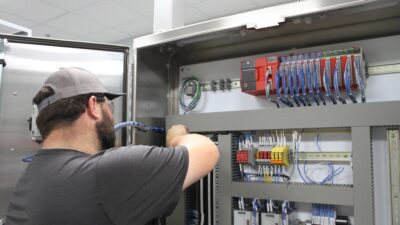These 7 signs of a continuous process could indicate that the ISA 106 standard may offer effective and efficient help for continuous control operations beyond the scope of ISA 88 (originally written for batch, but applied well beyond that) or ISA 95 (used to connect operations with enterprise systems), according to a Dow Chemical Co. representative. ISA 106 may be particularly useful for applications that may go years between restarts, such as various chemical and petrochemical operations.

What state are your control systems in? The ISA 106 standard for continuous processes may help if these sound familiar:
- Start-up, run, and shutdown are repeatable and optimized.
- Abnormal situation management uses additional control strategies.
- Intelligent alarming is used based on mode of operation.
- Equipment, devices, and controllers are automatically enabled based on mode of operation.
- Redundant equipment (such as pumps) are automatically swapped.
- Operators run a process unit instead of individual devices.
- Start-up and shutdown (which may be infrequent) includes automatic sequencing of the plant (unit to unit).
Loop-based vs. state-based
Dr. Yahya Nazer, M&E consultant engineering solutions at Dow Chemical Co., said Dow is applying state-based control (or unit-based control) to all major Dow plants. Doing so makes it easier to have safe, effective, and efficient operations, he explained at ARC Forum 2015, in February. Dr. Nazer, the ISA 106 co-chair, said state-based control (also called unit-based control) is designed to enable the operator to run (interact with) the process unit (distillation unit or reactor), versus focusing on how each piece of equipment, such as pump and valve, should operate (often described as the focus of loop-based control).
He began with ISA 106 about four years ago as a way to transition from Dow Mod5 control systems to more modern control systems. In a plug for participation in the standards process, especially from end users, Nazer said 168 ISA 106 members are involved, including 25 voting members, and 45% of members are owner-operator companies. About 75% of Dow assets now are using this wider-view approach. Nazer said he believes the related ISA Technical Report (TR) was the most quickly produced TR in the history of ISA standards work.
ISA-TR106.00.01-2013—Procedure Automation for Continuous Process Operations—Models and Terminology, approved in August 2013, looks at what is state-based control and at loop-based control versus state-based control, and related topics. Nazer described the difference in operator attention required similar to an automobile driver’s difference in using standard versus automatic transmission. With most loop-based systems, the operator identifies the state, executes commands, and waits for next state. In contrast, a state-based control (SBC) system identifies the state of the process and executes commands. The operator is permitted predefined transitions, and the SBC defines next state.
State-based control benefits
Benefits include a more holistic view and efficient use of existing control assets. A typical loop-control framework requires two or three times the attention from the operator compared to a state-based architecture, Nazer suggested.
SBC allows a procedural automation, fewer open loops, and more automated operations, showing a step-by-step view of automatic operations. Dow, for instance, is using fewer vessels since implementing SBCs.
SBCs also:
- Benefit interconnected units, processes, and plants. Dow sites often are interconnected; in one case, seven plants are linked in a chain of operations. A hiccup can affect other sites.
- Require less time for start-up, operations, and shutdown, allowing a productivity increase.
- Decrease the cost of automated cleaning length of shutdown, resulting in 16% savings in profit for one plant.
- Use system-level control: A controller decides which pump or both is optimal to produce desired result.
- Enable reuse; instructions can be reused throughout the company.
- Improve asset utilization by 3% to 6% estimated additional capacity.
- Improve operational efficiency by increasing number of valves per operator and improving information provided to operator to run plant better. Trend, because of industry demographics, is to have fewer operators.
- Implement manufacturing operating discipline as part of the control system. A majority of steps in these continuous processes can be automated.
- Have comparable design development and implementation costs compared to the standard automation approach, approximately 1.5% to 2.5% of the total cost of project.
If you think standards impede progress, think again by examining the workflow benefits of ISA 106.
– Mark T. Hoske, content manager, CFE Media, Control Engineering, [email protected].
Consider this
Why not consider an accepted industry standard for your continuous processes, if it can streamline architecture and improve performance?
ONLINE extras
This online article includes more information, photo, and article links to related process standards efforts.
ISA-TR106.00.01-2013—Procedure Automation for Continuous Process Operations—Models and Terminology — technical report
See related articles below on floor to enterprise integration or MES vs. batch manufacturing.



